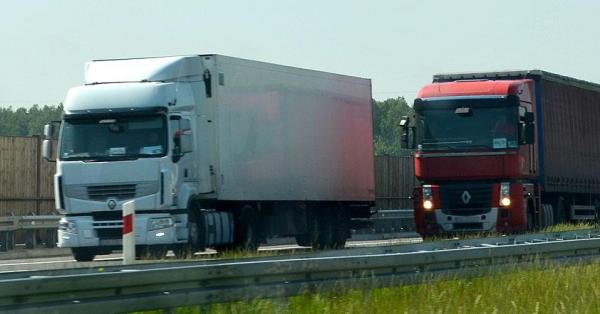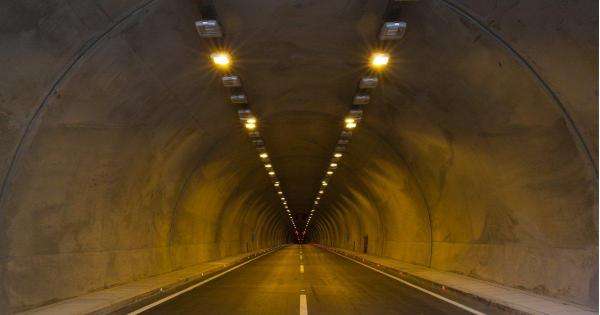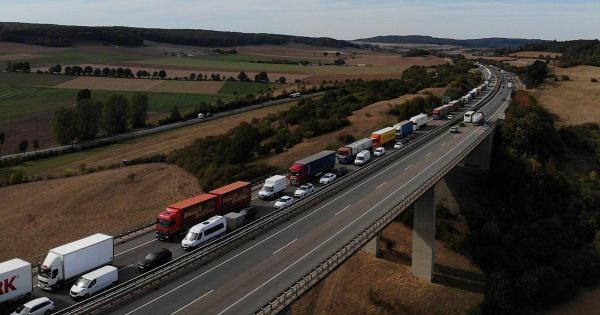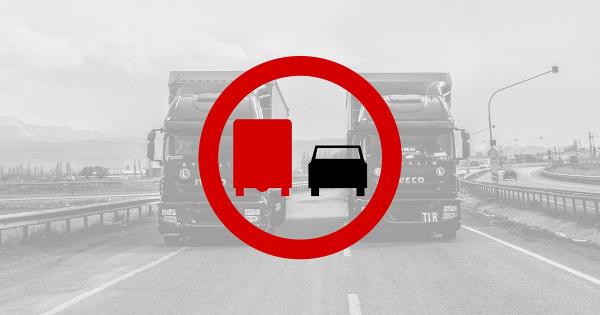
Zusätzliche Lkw-Beschränkungen in Katalonien
Aufgrund prognostizierter erheblicher Verkehrszunahmen am 3. Juli ist für einige Straßen- und Autobahnabschnitte eine zusätzliche Beschränkung eingeführt worden. Fahrzeuge oder Fahrzeugkombinationen mit einer zulässigen Gesamtmasse von mehr als 7,5 Tonnen müssen den rechten Fahrstreifen benutzen und dürfen andere Fahrzeuge nicht überholen und schneller als 80 km/h fahren.
Die Beschränkungen gelten am Sonntag, 3. Juli, zwischen 15:00 und 22:00 Uhr auf den folgenden Straßenabschnitten:
✅ auf dem nördlichen Abschnitt der C-32, zwischen KP 84,5, an der Anschlussstelle mit der B-20, in der Gemeinde Montgat und KP 114, an der Anschlussstelle 113 bei Canet de Mar, in der Gemeinde Canet de Mar.
✅ der südliche Abschnitt der C-32, zwischen KP 47,5, Ausfahrt Gavà, in der Gemeinde Gavà und KP 60, Ausfahrt 15 bei l’Hospitalet, in der Gemeinde Cornellà de Llobregat
✅ die Autobahn AP-7, zwischen KP 111.1, Ausfahrt 11 bei Sant Celoni und Montseny in der Gemeinde Sant Celoni, und KP 133.8, Ausfahrt 13 bei Granollers, Montornès del Vallès und Vilanova del Vallés, in der Gemeinde Montornès del Vallès
✅ auf der Autobahn AP-7, zwischen KP 158, wo die B-30 in die AP-7 mündet, in der Gemeinde de Sant Cugat del Vallés, und KP 213 in der Gemeinde Banyeres del Penedès
✅ auf der Autobahn B-23, zwischen KP 8, Ausfahrt 8 bei Sant Feliu de Llobregat und Molins de Rei Sud in der Gemeinde Sant Feliu de Llobregat, und KP 15,5 an der Kreuzung mit AP-7, in der Gemeinde Castellbisbal

A43: Vollsperrung in Fahrtrichtung Münster
Der Grund dafür sind die Bauarbeiten an der Brücke der Deutschen Bahn parallel zur Brücke Cranger Straße.
Die bereits angekündigt, sperrt die Autobahn Westfalen die A43 zwischen Herne-Eickel und dem Kreuz Recklinghausen von Freitag (1.7.) ab 21 Uhr bis Montag (4.7.) um 5 Uhr. Der Grund dafür sind die Bauarbeiten an der Brücke der Deutschen Bahn parallel zur Brücke Cranger Straße. ❗Großräumige Umleitungen führen über die A40 und die A45.❗
Die Autobahn Westfalen nutzt die Vollsperrung, um ihrerseits Arbeiten an der Strecke vorzunehmen. Deswegen steht dem Verkehr im genannten Zeitraum in Fahrtrichtung Wuppertal im Bereich der Schrankenanlage südlich des Kreuzes Recklinghausen zeitweise nur ein Fahrstreifen zur Verfügung.

Sperrungen des Mont-Blanc-Tunnels im Juni und Juli
Aufgrund von Wartungsarbeiten ist der Tunnel in folgenden Nächten von 19:30 bis 6:00 Uhr komplett gesperrt.
JUNI
– Donnerstag, 23. / Freitag, 24.;
– Montag, 27. / Dienstag, 28.;
– Dienstag, 28./ Mittwoch, 29.;
– Mittwoch, 29. / Donnerstag, 30.;
– Donnerstag, 30. / Freitag, 1. Juli.
JULI
– Montag, 4. / Dienstag, 5.;
– Dienstag, 5. / Mittwoch, 6.;
– Mittwoch, 6. / Donnerstag, 7.;
– Donnerstag, 7. / Freitag, 8.
Der Seprrungskalender kann sich im Falle unerwarteter Umstände ändern.

Mehr Lkw-Blockabfertigungen in Tirol
In der zweiten Junihälfte haben die österreichischen Behörden 4 Tage (13., 14., 15. und 17. Juni) geplant, an denen die Anzahl der nach Tirol einfahrenden Lkw dosiert wird.
An den aufgelisteten Tagen wird die Polizei an einem eigens eingerichteten Checkpoint auf der A12 bei Kufstein Nord den Schwerverkehr ab 05.00 Uhr in Fahrtrichtung Innsbruck so verlangsamen und falls nötig zum Stillstand bringen, dass pro Stunde nur etwa 300 Lkw von Deutschland kommend auf der A12 unterwegs sind.
Dieses Jahr hat die Tiroler Landesregierung 38 Blockabfertigungstage eingeplant. Die folgende Liste enthält Tage, die bis zum Ende des Jahres verbleiben:
Juni
13. Juni (Montag)
14. Juni (Dienstag)
15. Juni (Mittwoch)
17. Juni (Freitag).
Juli
4. Juli (Montag)
11. Juli (Montag)
18. Juli (Montag)
25. Juli (Montag)
Oktober
4. Oktober (Dienstag)
27. Oktober (Donnerstag)
November
2. November (Mittwoch)
3. November (Donnerstag)
16. November (Mittwoch)
17. November (Donnerstag)
23. November (Mittwoch)
24. November (Donnerstag)
30. November (Mittwoch)
Dezember
1. Dezember (Donnerstag)
9. Dezember (Freitag)
13. Dezember (Dienstag)
14. Dezember (Mittwoch).

Additional HGV driving bans on the A22 Brenner
Owing to upcoming public holidays in Austria and Germany, the government of the Italian province of Bolzano in South Tyrol has introduced an additional driving ban for vehicles with a GVW of over 7.5 tons on the north-bound A22 Brenner motorway between Vipiteno / Sterzing and the border with Austria
The ban is in effect on:
❌ May 26, from 00.00 to 10:00 PM
❌ June 6, from 00.00 to 10:00 PM
❌ June 16, from 00.00 to 10:00 PM
Heavy goods vehicles with a GVW of more than 7.5 tons, which are already traveling on the Brenner motorway in the province of Bolzano when the ban comes into effect, can stop at the SA.DO.BRE parking lot in Sterzing / Vipiteno or at other places along the motorway in the neighboring communes or in parking lots designated by the traffic police.
As usual, the ban does not apply to vehicles used exclusively for the transport of cattle for slaughter, perishable food products and as part of combined road and rail transport with a railway reservation containing the vehicle registration number, date and time of the train service.

Zusätzliche Lkw-Beschränkungen in Katalonien
Aufgrund prognostizierter erheblicher Verkehrszunahmen am 12. Juni ist für einige Straßen- und Autobahnabschnitte eine zusätzliche Beschränkung eingeführt worden. Fahrzeuge oder Fahrzeugkombinationen mit einer zulässigen Gesamtmasse von mehr als 7,5 Tonnen müssen den rechten Fahrstreifen benutzen und dürfen andere Fahrzeuge nicht überholen und schneller als 80 km/h fahren.
Die Beschränkungen gelten am Sonntag, 12. Juni, zwischen 15:00 und 22:00 Uhr auf den folgenden Straßenabschnitten:
✅ auf der Autobahn AP-7, zwischen KP 158, wo die B-30 in die AP-7 mündet, in der Gemeinde de Sant Cugat del Vallés, und KP 213 in der Gemeinde Banyeres del Penedès
✅ auf der Autobahn B-23, zwischen KP 8, Ausfahrt 8 bei Sant Feliu de Llobregat und Molins de Rei Sud in der Gemeinde Sant Feliu de Llobregat, und KP 15,5 an der Kreuzung mit AP-7, in der Gemeinde Castellbisbal
✅ auf dem nördlichen Abschnitt der C-32, zwischen KP 84,5, an der Anschlussstelle mit der B-20, in der Gemeinde Montgat und KP 114, an der Anschlussstelle 113 bei Canet de Mar, in der Gemeinde Canet de Mar.

Ungarn – Lockerung des Lkw-Fahrverbots
Auf Ersuchen des ungarischen Straßentransportverbandes (MKFE) hat das ungarische Verkehrsministerium das Fahrverbot für Fahrzeuge mit einer zulässigen Gesamtmasse über 7,5 t für zwei Nachtperioden während des bevorstehenden Pfingstwochenendes ausgesetzt.
Das gelockerte Fahrverbot gilt:
• 5. Juni (Sonntag) von 06:00 bis 22:00 Uhr
• 6. Juni (Montag) von 06:00 bis 22:00 Uhr

Katalonien – zusätzliche Lkw-Beschränkungen
Aufgrund prognostizierter erheblicher Verkehrszunahmen am 6. Juni ist für einige Straßen- und Autobahnabschnitte eine zusätzliche Beschränkung eingeführt worden. Fahrzeuge oder Fahrzeugkombinationen mit einer zulässigen Gesamtmasse von mehr als 7,5 Tonnen müssen den rechten Fahrstreifen benutzen und dürfen andere Fahrzeuge nicht überholen und schneller als 80 km/h fahren.
Die Einschränkung gilt für:
✅ der südliche Abschnitt der C-32, zwischen KP 47,5, Ausfahrt Gavà, in der Gemeinde Gavà und KP 60, Ausfahrt 15 bei l’Hospitalet, in der Gemeinde Cornellà de Llobregat
✅ auf der Autobahn AP-7, zwischen KP 158, wo die B-30 in die AP-7 mündet, in der Gemeinde de Sant Cugat del Vallés, und KP 213 in der Gemeinde Banyeres del Penedès
✅ auf der Autobahn B-23, zwischen KP 8, Ausfahrt 8 bei Sant Feliu de Llobregat und Molins de Rei Sud in der Gemeinde Sant Feliu de Llobregat, und KP 15,5 an der Kreuzung mit AP-7, in der Gemeinde Castellbisbal
✅ auf dem nördlichen Abschnitt der C-32, zwischen KP 84,5, an der Anschlussstelle mit der B-20, in der Gemeinde Montgat und kKP 114, an der Anschlussstelle 113 bei Canet de Mar, in der Gemeinde Canet de Mar.

Spanien – Baskenland – A-15 gesperrt
Aufgrund von Wartungsarbeiten an der Autobahn A-15 im Baskenland wird der Verkehr in beiden Richtungen von Montag, 30. Mai bis Freitag, 3. Juni, jede Nacht zwischen 22:00 und 6:00 Uhr vollständig gesperrt.
Die Autobahn A-15 in Richtung Andoain (Provinz Gipuzkoa) wird ab der Anschlussstelle Berastegi und in Richtung Pamplona ab der Anschlussstelle Sorabilla gesperrt. Umleitungsrouten sind entsprechend gekennzeichnet.